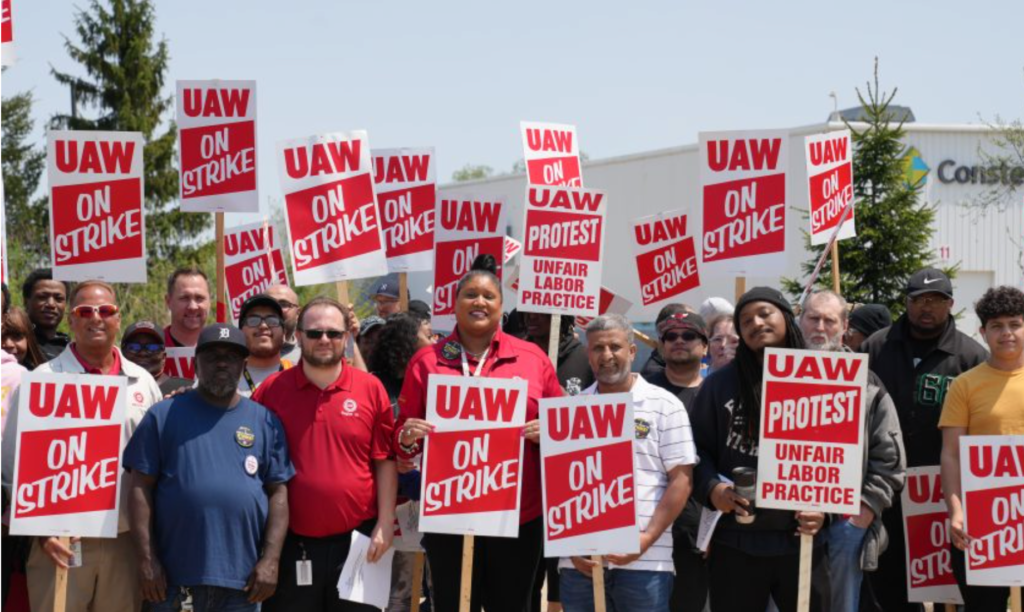
Following the failure of negotiations between the United Auto Workers (UAW) union and the three major US automakers—General Motors, Ford Motor, and Stellantis, the parent company of Chrysler, Jeep, and Ram—over better pay raises and benefits, about 13,000 auto workers went on strike on Friday, September 15.
The strike isn’t a full-scale walkout because only a small portion of the union’s about 150,000 members walked off their jobs at the Wentzville, Missouri, GM assembly plant, the Wayne, Michigan, Ford factory, and the Toledo, Ohio, Stellantis Jeep plant. It might, however, grow if the union and the automakers can’t quickly come to an agreement.
Auto workers strike: What is the union demanding?
For example, “For years, the union gave up general pay raises and lost cost-of-living wage increases to help the companies control costs,” the AP reported. Moreover, defined-benefit pensions are not provided to UAW employees hired after 2007.
The union is now requesting the restoration of pensions and cost-of-living adjustments for all employees. It has also urged the elimination of variable pay scales for factory jobs, where top-tier employees earn $32 per hour but new hires can only make $17.
Although the union officials have acknowledged that their demands are “audacious,” they maintain that the businesses could easily afford to considerably increase worker wages. The “Big Three,” which includes GM, Ford, and Stellantis, have made enormous profits during the past ten years. According to The New York Times, Stellantis, Ford, and GM each made $11.6 billion, $3.7 billion, and $5 billion in earnings in the first half of 2023.
What have the automakers offered?
GM has started giving a 20% pay rise over four years as of September 14. Ford has made the same offer. The corporation made another offer since its previous one, which was for 17.5%, according to the AP.
The ideas were rejected by the union as being insufficient. On the other hand, the automakers have said the requirements are too expensive.
“They (the three companies) say they will spend vast amounts of capital in the coming years to continue to build combustion-engine vehicles while at the same time designing electric vehicles and building battery and assembly plants for the future, and can’t afford to be saddled with significantly higher labor costs,” the report further added.
Car costs may increase if the strike lasts three weeks or longer
On Saturday, September 16, negotiations between the businesses and the UAW are scheduled to take place. UAW President Shawn Fain told the reporters, “We’re not going to wreck the economy. The truth is we are going to wreck the billionaire economy”.
He has, however, also issued a warning that the strike will grow if the automakers continue to bargain in “bad faith, continue to stall, or continue to give us insulting offers.”
Car costs may increase if the strike lasts three weeks or longer. According to the AP story, the three automakers had enough automobiles on hand at the end of August to endure for 70 days.
Consumers may turn to nonunion automakers who can charge them more once the companies start to run out of cars.
